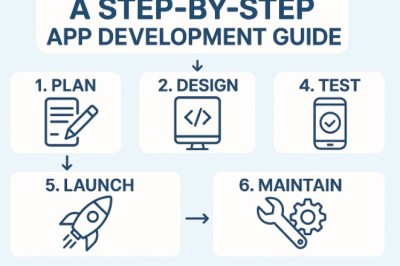views
As Americans anticipate the close of 2022 and usher in a new year, we are met with the release of the latest statistics and data related to health and wellness. These statistics show the trends in life expectancy rates, drug overdose trends, and even the current leading cause of death in the United States across various demographics. Individually, these statistics focus on reporting specific categories, but collectively, they help tell the story of the state of drug abuse in America and what we should be aware of.
Life Expectancy
This month, the U.S. Centers for Disease Control and Prevention (CDC) released its complete findings for Mortality in America throughout 2021. The high points of this release include the following compared to 2020:
● Life expectancy declined from age 77 to 76.4.
● The death rate (age-adjusted) increased by 5.3%, totaling 879.7 people. This figure is per the 100,000 standard population.
● For people ages 1 and older, all age-specific death rates saw an increase.
● The top three causes of death are still heart disease, cancer, and COVID-19, with nine out of the top 10 leading causes of death in 2020 remaining the same.
While the decline in life expectancy may not seem like a significant change, this represents a 25-year low in America, a trend many have contributed to the COVID-19 pandemic. Beyond COVID-19’s effects, most mortality rates related to sex, age, nationality, cause of death, and infant death remained very close to the 2020 statistics. In summary, the findings have not changed much from 2020, but the rates have increased annually in many categories.
Drug Overdose Deaths
In addition to the CDC’s Mortality findings for 2021, the organization also released an analysis of drug overdose deaths from 2001-2021. The high points of this include the following trends to be aware of, specifically by comparing the year 2021 to 2020:
● In 2021 alone, over 106,000 drug overdose deaths occurred (106,699).
● The largest percentage increase between 2020 and 2021 was for those ages 65 years and over.
● Every racial demographic saw an annual increase in overdose deaths.
● Every age demographic 25 years and older saw an annual increase in overdose deaths.
● While heroin overdoses declined by over 30%, synthetic opioids increased by over 20%.
● Cocaine related-deaths increased from 2020 to 2021.
These findings tell an interesting story, but the larger trending data (from 2001-2021) helps put things into perspective as well, such as the fact that mortality related to drug overdoses in older Americans has tripled in the past two decades. Cocaine use saw a trending decrease from 2006 to 2012. Between 2015 and 2016, the rate increased to the peak seen in 2006 and has steadily increased ever since. As of 2021, overdose deaths related to cocaine are more than double the 100,000 standard population numbers from 2006. Psychostimulants remained largely unchanged in trends from 2001 to 2012, but the 2021 numbers have increased from less than 2 to 10, an increase of over 400%.
There is a large amount of variety for opioid-related overdoses, depending on the opioid type. For example, methadone stayed consistent from 2001-2021, while natural and semisynthetic opioids have seen an ebb and flow- peaking at a rate of about 5 per 100,000 standard population in 2017. As previously mentioned, heroin has steadily declined since then.
But this is only part of the story of opioid trends. What the 2001-2021 range shows for synthetic opioids is startling. In 2001, the overdose rate was less than 1, while 2021 concludes with about 21 per 100,000, a 2000% increase over two decades. The significant spike occurred in 2019, which is almost entirely due to the pervasive nature of the synthetic opioid fentanyl. This drug has found its way into virtually any drug in the illicit drug industry. It’s potent and highly addictive, and it only takes 2 mg (milligrams) to 3 mg to kill the average person. Add this to the fact that this drug is mixed and mingled with other potent drug forms, both opioids, and other varieties, and it’s no wonder why overdose deaths related to synthetic opioids have catastrophically increased in recent years.
Heart Concerns
When considering the recent data, it’s important to note something about drug abuse issues beyond the threat of overdose rates. In 2020 and 2021, heart disease was the leading cause of death. The trends in overdose-related deaths focus on two drug types: cocaine and synthetic opioids. But what is the connection between these drugs and heart concerns? According to the American Heart Association, while all illegal drugs can negatively impact heart health, they call cocaine “the perfect heart attack drug.” This drug causes adverse effects such as increased blood pressure and the thickening of the heart’s walls.
Opioids also increase the likelihood of heart failure, such as disorders including low-density lipoprotein and free triglycerides, and a 34% increase in experiencing atrial fibrillation. Beyond the risk associated with active opioid users, opioid withdrawal can also increase the risk of heart disease, such as takotsubo cardiomyopathy (TC).
How to Respond
There is much to consider when it comes to the data brought to us by the CDC at the close of 2022. However, what we can take away from the big picture so far is an overall declining trend in health and wellness across America. Drug abuse is not the sole cause of this, but it is becoming the main culprit more and more each year. It is certainly worth noting the connection between the leading cause of death (heart failure) and the drugs leading the trend in overdose deaths (cocaine and synthetic and opioids) are directly related. Because of this, detox is more important than ever when it comes to taking an honest assessment of the deadly trends of drug abuse today. If you or someone you know has a substance use disorder (SUD), professional help is the greatest way to change the trends in a positive direction in 2023.
Sources
Centers for Disease Control and Prevention (2022 December). Mortality in the United States, 2021. Retrieved https://www.cdc.gov/nchs/products/databriefs/db456.htm
Forbes. (2022 December 22). U.S. Life Expectancy Drops to 25-Year Low Amid Covid, CDC Data Show. Retrieved https://www.forbes.com/sites/siladityaray/2022/12/22/us-life-expectancy-drops-to-25-year-low-amid-covid-cdc-data-show/?sh=1cdf80666b5b
National Center for Health Statistics. (2022 December). Mortality in the United States, 2021. Retrieved https://www.cdc.gov/nchs/data/databriefs/db456.pdf
Centers for Disease Control and Prevention (2022 December). Drug Overdose Deaths in the United States, 2001–2021. Retrieved https://www.cdc.gov/nchs/products/databriefs/db457.htm
U.S. News. (2022 November 30). Fatal Drug Overdoses Among U.S. Seniors Have Tripled Since 2000. Retrieved https://www.usnews.com/news/health-news/articles/2022-11-30/fatal-drug-overdoses-among-u-s-seniors-have-tripled-since-2000
National Center for Health Statistics. (2022 December). Drug Overdose Deaths in the United States, 2001–2021. Retrieved https://www.cdc.gov/nchs/data/databriefs/db457.pdf
Delphi Health Group. (n.d.) Fentanyl Addiction: What Side Effects Should You Know About? Retrieved https://delphihealthgroup.com/opioids/fentanyl/
American Heart Association. (2015 September 30). Illegal Drugs and Heart Disease. Retrieved https://www.heart.org/en/health-topics/consumer-healthcare/what-is-cardiovascular-disease/illegal-drugs-and-heart-disease
Quest Diagnostics (n.d.). The Links Between Opioids and Coronary Heart Disease. Retrieved https://www.questdiagnostics.com/our-company/actions-insights/2019/links-between-opioids-and-coronary-heart-disease
Delphi Health Group. (n.d.) Guide to Alcohol Detox: Severity, Dangers, and Timeline. Retrieved https://delphihealthgroup.com/alcohol/detox/
























Comments
0 comment